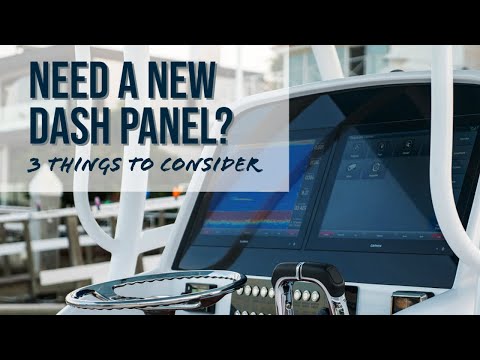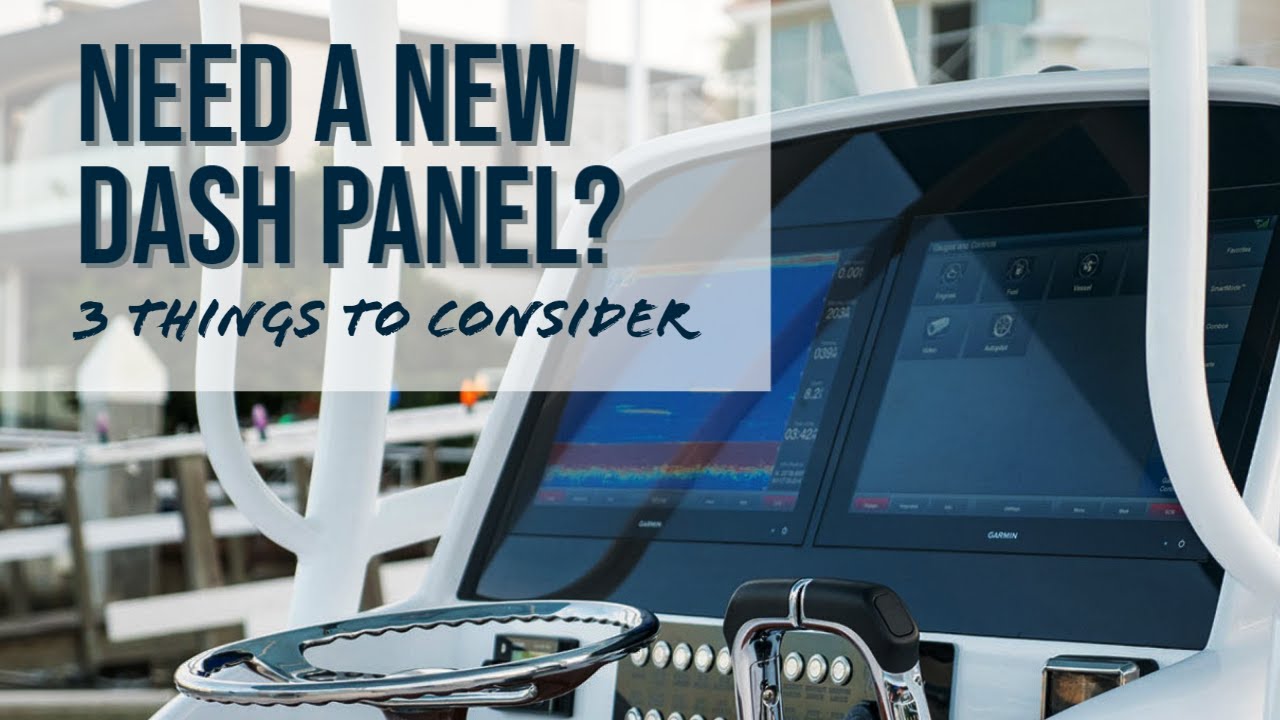Boat dash panel fabrication is an art form that combines precision engineering with creative design, resulting in a visually stunning and highly functional centerpiece for any watercraft. With meticulous attention to detail, skilled craftsmen transform raw materials into a custom-made dash panel that seamlessly integrates all essential controls and instruments. From sleek and modern to classic and elegant, the possibilities are endless when it comes to boat dash panel fabrication. Each panel is meticulously crafted to suit the individual style and requirements of the boat owner, ensuring a unique and personalized touch. The process involves cutting-edge technologies and techniques, including computer-aided design and manufacturing, to achieve the perfect fit and finish. Boat dash panel fabrication not only enhances the aesthetics of the boat’s interior but also optimizes functionality, providing easy access and intuitive control of various systems. Whether you are a passionate boat enthusiast or a professional captain, the allure of boat dash panel fabrication lies in its ability to elevate the overall boating experience. It represents the perfect fusion of artistry and engineering, transforming a simple boat into a masterpiece on the water. Trust the experts in boat dash panel fabrication to bring your vision to life and embark on a journey of style, sophistication, and unparalleled performance.

2023 Trending Boat Dash Panel Fabrication
| Component | Material | Features |
|---|---|---|
| Instrument Cluster | Marine-Grade Plastic | Waterproof, UV-resistant, customizable backlighting |
| Switch Panel | Aluminum Alloy | Corrosion-resistant, integrated LED indicators, tactile feedback |
| Control Panel | Carbon Fiber Composite | Lightweight, high strength, sleek design |
| Dashboard Trim | Real Wood Veneer | Luxurious feel, natural aesthetics, available in various finishes |
| Audio Console | Fiberglass Reinforced Plastic | Durable, non-conductive, excellent acoustic properties |
As experts in boat dash panel fabrication, we understand the need for cutting-edge materials and features that enhance both functionality and aesthetics. The year 2023 brings forth exciting trends in this industry, showcasing remarkable advancements in the construction of boat dash panels.
The instrument cluster, a crucial component of any dash panel, is now predominantly crafted from marine-grade plastic. This material offers exceptional waterproofing capabilities, ensuring optimal performance even in challenging marine environments. Additionally, these instrument clusters boast UV-resistant properties, preventing any fading or discoloration caused by prolonged sun exposure. Furthermore, backlighting customization options allow boat owners to personalize their dash panels to suit their preferences and create a truly immersive boating experience.
Switch panels, another vital element, have witnessed a shift towards aluminum alloy construction. With its inherent corrosion resistance, this material ensures longevity and reliability. Integrated LED indicators provide intuitive visual cues, allowing for quick and effortless navigation of various boat functionalities. Moreover, tactile feedback mechanisms offer an enhanced user experience, ensuring precise control even in demanding conditions.
The control panel, designed to be both functional and visually appealing, now often incorporates carbon fiber composite. Renowned for its exceptional strength-to-weight ratio, carbon fiber provides a lightweight solution without compromising on durability. This material choice not only guarantees a sleek and modern design but also ensures the longevity required for marine applications.
To add a touch of elegance to boat interiors, dashboard trims are increasingly featuring real wood veneer. This choice offers a luxurious feel and enhances the aesthetics of the dash panel. Available in various finishes, real wood veneer trims allow boat owners to match their boat’s interior design with their personal style.
Lastly, the audio console, where entertainment meets functionality, often employs fiberglass-reinforced plastic. This material choice ensures durability while providing excellent acoustic properties. Its non-conductive nature makes it ideal for housing electronic components, allowing for crisp and clear audio reproduction without interference.
As we enter the year 2023, the boat dash panel fabrication industry is witnessing a rapid evolution, pushing the boundaries of material technologies and design possibilities. Stay ahead of the curve by embracing these trending advancements, elevating your boating experience to new heights.
Streamlining Boat Panels: Material, Electronics, and Installation Unveiled
Boat Dash Panel Fabrication: Creating a Customized Control Center for Your Vessel
When it comes to boat customization, one of the most important aspects is the dash panel. The dash panel serves as the control center for your vessel, housing various gauges, switches, and other essential components. Whether you are building a new boat or looking to upgrade your current one, understanding the process of boat dash panel fabrication is crucial. In this article, we will explore the key steps and considerations involved in creating a customized dash panel that meets your specific needs and preferences.
1. Planning and Design
Planning and design are the first crucial steps in boat dash panel fabrication. Before diving into the fabrication process, it is essential to have a clear vision of what you want your dash panel to look like and the features it should incorporate. Consider the type and number of gauges, switches, and other controls you need, as well as any additional accessories such as cup holders or USB ports.
Consulting with a professional boat builder or a dash panel fabrication specialist can be highly beneficial during the planning and design phase. They can provide expert advice on the best layout and materials to use, ensuring that your dash panel is both functional and visually appealing.
2. Material Selection
Material selection is another critical aspect of boat dash panel fabrication. The choice of materials will impact the durability, aesthetics, and functionality of your dash panel. Commonly used materials for dash panel fabrication include:
- Fiberglass: Fiberglass is a popular choice due to its strength, lightweight nature, and ability to be molded into various shapes.
- Acrylic: Acrylic, also known as plexiglass, offers excellent clarity and can be easily cut and shaped.
- Aluminum: Aluminum is a durable and corrosion-resistant material that can withstand harsh marine conditions.
- Wood: Wood dash panels provide a classic and timeless look, but they require proper sealing and maintenance to prevent water damage.
Consider the pros and cons of each material and select the one that best suits your requirements and personal style.
3. Fabrication Process
The fabrication process involves several steps to transform your design and chosen materials into a functional dash panel. Here is an overview of the typical fabrication process:
- Preparation: Start by preparing the chosen material, ensuring it is clean and free from any imperfections or damage.
- Measurement and Cutting: Measure and mark the dimensions for your dash panel design on the material. Use precision tools to cut the material according to these measurements.
- Shaping and Forming: If necessary, shape or form the material using specialized equipment or techniques to achieve the desired contours and curves.
- Drilling and Routing: Drill holes for gauges, switches, and other controls based on your design. Use a router to create any necessary channels or grooves for wiring or mounting brackets.
- Finishing: Once all the necessary holes and channels are created, sand the edges and surfaces of the dash panel to achieve a smooth finish. Apply any desired finishes or coatings for added protection and aesthetics.
It is important to note that the fabrication process may vary depending on the chosen material and complexity of your design. Seeking professional assistance or guidance during the fabrication process can help ensure proper execution and a high-quality end result.
4. Installation and Wiring
Installation and wiring are the final steps in the boat dash panel fabrication process. Once your customized dash panel is ready, carefully install it in your boat’s console or cockpit area, ensuring a secure fit. Follow the manufacturer’s instructions or consult with a professional if needed.
Wiring the gauges, switches, and other controls is a crucial aspect of the installation process. Ensure proper connections, use marine-grade wiring, and follow safety guidelines to prevent electrical issues or hazards.
5. Maintenance and Care
Maintenance and care are essential to prolong the lifespan and functionality of your fabricated boat dash panel. Regularly inspect the panel for any signs of damage, such as cracks or loose components, and promptly address them to prevent further issues.
Proper cleaning is also crucial to remove dirt, salt, and other debris that can accumulate on the panel’s surface. Use mild soap and water, avoiding harsh chemicals that may damage the material or finishes.
In conclusion, boat dash panel fabrication is a meticulous process that requires careful planning, material selection, and skilled execution. By understanding the key steps involved, you can create a customized dash panel that enhances the functionality and aesthetics of your boat, providing you with a control center tailored to your specific needs and preferences.
Boat Dash Panel Fabrication
Frequently Asked Questions
What materials are commonly used for boat dash panel fabrication?
Boat dash panels are typically fabricated using materials such as acrylic, aluminum, stainless steel, or marine-grade plywood. Acrylic is a popular choice due to its durability, resistance to UV rays, and ability to maintain its color over time. Aluminum panels are lightweight and corrosion-resistant, making them suitable for marine environments. Stainless steel panels offer a sleek and modern look while being resistant to rust and corrosion. Marine-grade plywood is a cost-effective option that provides strength and durability. It is important to choose materials that are specifically designed for marine applications to ensure they can withstand the harsh conditions of boating.
Can boat dash panels be customized to fit specific boat models?
Yes, boat dash panels can be customized to fit specific boat models. Every boat has unique dimensions and layout, so it is essential to fabricate dash panels that perfectly match the existing space. Customization can include cutting the panels to the exact size and shape required, as well as adding cutouts for switches, gauges, and other control elements. Working with a professional fabricator who specializes in boat dash panel fabrication will ensure precise measurements and a perfect fit for your boat.
What are the steps involved in boat dash panel fabrication?
Boat dash panel fabrication involves several steps to create a functional and aesthetically pleasing dash panel. The process typically includes the following steps:nn1. Design and Planning: This step involves determining the layout, dimensions, and materials for the dash panel. It may also include creating a 3D model or mockup to visualize the final product.nn2. Material Selection: Choosing the right materials is crucial for durability and performance. Consider factors such as UV resistance, corrosion resistance, and aesthetics.nn3. Cutting and Shaping: The chosen materials are cut and shaped according to the design specifications. This may involve using CNC machines, laser cutting, or traditional cutting tools.nn4. Finishing: The panels are sanded, polished, and finished to achieve a smooth and professional appearance. This step may also include adding any necessary cutouts or holes for switches and gauges.nn5. Installation: Once the panels are fabricated, they can be installed in the boat. This may involve securing them with screws, adhesive, or other fastening methods.nnBy following these steps and working with experienced professionals, you can achieve a high-quality boat dash panel that meets your specific requirements.

